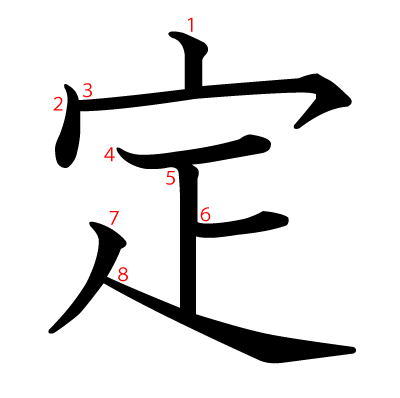Kanji is one of three writing systems used to write Japanese, used to express advanced cognitive concepts in sentences. (The other two are hiragana, generally used for grammatical particles and simpler elements of sentences, and katakana, for writing foreign words and names.) Since I’m interested in the mechanics of how languages work, I’ll talk about the kanji 定, which is one of my favorites (in part because it’s fun to write), and how it can be used to express some advanced vocabulary words. The character itself means specified, fixed, definite or ordered, and by itself it’s usually pronounced 定め sadame, a poetic way to say fate or destiny. Hook the character up with other Chinese characters and you can express more advanced concepts, like 予定 yotei (in advance + specified = a person’s schedule), 決定 kettei (to decide + specified = something that has been officially established or decided), or 設定 settei (to set + specified = settings, as in the settings in a software program). It all looks hopelessly complex at first, but when you have a base of 300-500 kanji or so, it’s not that difficult to puzzle out the meanings of new compound words based on the individual characters. Once you’ve studied enough Japanese, you can go to countries like Hong Kong, Taiwan or Malysia and read 25-40% of the characters on signs and in menus, which can be surprisingly helpful.

The first rule is kanji is, you have to embrace its difficulty.















